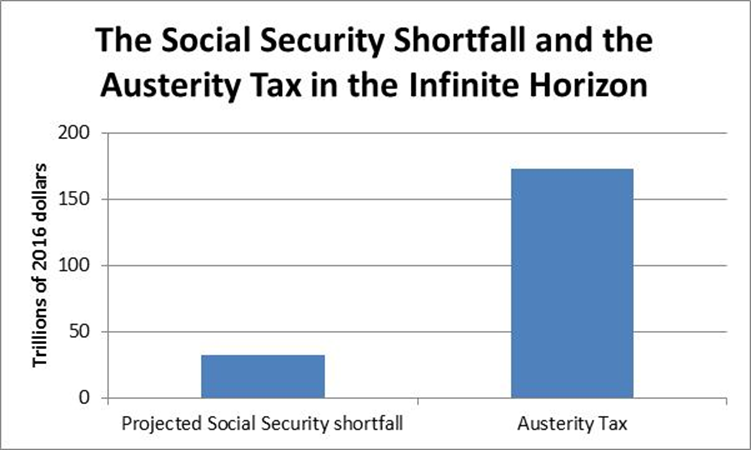October 23, 2016
By Lara Merling and Dean Baker
The Peter Peterson-Washington Post deficit hawk gang keep trying to scare us in cutting Social Security and Medicare. If we don’t cut these programs now, then at some point in the future we might have to cut these program or RAISE TAXES.
There are many good reasons not to take the advice of the deficit hawks, but the most immediate one is that our economy is suffering from a deficit that is too small, not too large. The point is straight forward, the economy needs more demand, which we could get from larger budget deficits. More demand would lead to more output and employment. It would also cause firms to invest more, which would make us richer in the future.
The flip side in this story is that because we have not been investing as much as we would in a fully employed economy, our potential level of output is lower today than if we had remained near full employment since the downturn in 2008. The Congressional Budget Office estimates that potential GDP in 2016 is down by 10.5 percent (almost $2.0 trillion) from the level it had projected for 2016 back in 2008, before the downturn.
This is real money, over $6,200 per person. But if we want to have a little fun, we can use a tactic developed by the deficit hawks. We can calculate the cost of austerity over the infinite horizon. This is a simple story. We just assume that we will never get back the potential GDP lost as a result of the weak growth of the last eight years. Carrying this the lost 10.5 percent of GDP out to the infinite future and using a 2.9 percent real discount rate gives us $172.94 trillion in lost output. This is the size of the austerity tax for all future time. It comes to more than $500,000 for every person in the country.
By comparison, we can look at the projected Social Security shortfall for the infinite horizon. According to the most recent Social Security Trustees Report, this comes to $32.1 trillion. (Almost two thirds of this occurs after the 75-year projection period.) Undoubtedly, many deficit hawks hope that people would be scared by this number. But compared to the austerity tax imposed by the deficit hawks, it doesn’t look like a big deal.

Source: Social Security Trustees Report and Author’s Calculations.







Comments